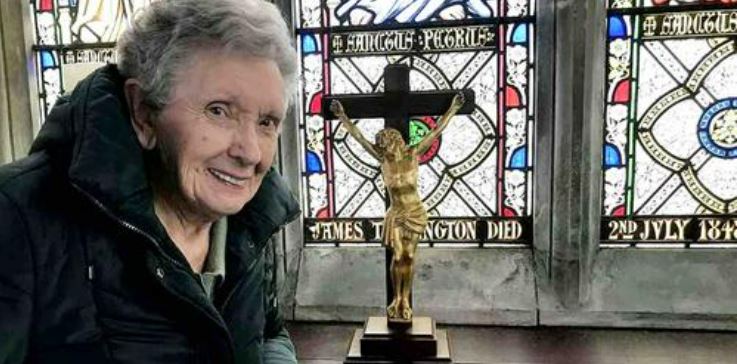A group of churchgoers from Britain are making an almost 300-mile journey to return a beloved crucifix to its original church that was destroyed in World War I.
After the Battle of the Somme, a battle that was fought back in World War I from July to November 1916, the town of Doingt, France had a lot of rebuilding to do after it was left in ruin. The Somme was Britain's largest battle against the German line and is recorded as one of the bloodiest battles in human history.
Many historical items were lost in The Somme, except for a particular religious artifact from the Église de Doingt (Church of Doingt)—the crucifix.
After the bloody battle, a British reverend found the crucifix in the mud and was brought back to Britain where it has sat on the altar at the All Saints Church in Tinwell since 1936.
It has been 107 years since the artifact has seen its original holding place, and after discovering the town and church were rebuilt a few years after the war, the All Saint parishioners made the executive decision to send it back home.
When Tinwell resident Katharine McDevitt discovered the town's rejuvenation in 2018, she made up the plan for a group of 10 people from the British church to make the 297-mile trip to the northern France village to reunite the crucifix with the church.
 Crucifix (Good News Network/Facebook)
Crucifix (Good News Network/Facebook)Since Doingt and the church were destroyed during the war and then rebuilt, returning the crucifix is seen as a precious link between destruction and restoration.
"A village once destroyed is rebuilt; where there was trauma and death in 1917, today there is life and community," says Reverend Olwen Woolcock from Tinwell to the GoodNewsNetwork. "The crucifix is like the last piece of the jigsaw in that restoration."
This plan has been in the works for over four years and required special dispensation from the Chancellor of the Peterborough Diocese to remove the relic from the church to bring it home.
"I wrote a letter to the mayor of Doingt-Flamincourt and asked Katharine to translate it into French," says Rev. Woolcock. "After several months we sent another letter and this time got a response from the deputy mayor who put me in touch with a member of their historical society. They said they would very much like their crucifix back so we started to organize the trip."
The Battle of the Somme was bloody and one that the region will never forget, that's why the return of the crucifix is so significant.
"The region is sensitive to the fate of all the young British soldiers who died on our soil. The return of the crucifix symbolizes the friendship between our two nations..."












